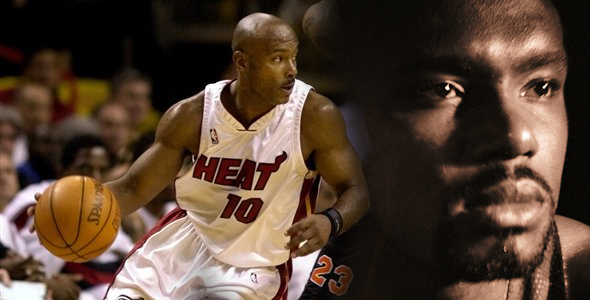I don’t care who you are, where you’re from, what language you speak, or what religion you belong to. If we’re talking about the crossover in basketball today, you absolutely must acknowledge that this is the most notable move:
I don’t know about you, but the day after that move happened, that’s all people were talking about where I’m from. Basketball never really saw a move quite like that before. That wasn’t the first time Iverson performed that game-changing move, but the fact that he embarrassed Michael Jordan with it makes it one of the best moves in NBA history. I’d say it’s a top 10 move all-time. He was able to rock Jordan off balance once, then he reloads and hits him with it again.
But, let’s start from the beginning, shall we.
In basketball, there’s nothing more annoying than a defender that you just can’t shake. Speed usually will allow you to get around a pesky defender, but not everyone is blessed with blinding quickness. The good thing is that you don’t need to be the fastest person in the world with the basketball. As long as you have a good crossover, you’re in good shape.
The modern day crossover has taken over the face of basketball. Just about everyone does it, but not everyone’s is that impactful. In fact, some are just simply poor attempts. But how did it get to this point?
Let’s first go back about 20 years, to Oakland, California. The Golden State Warriors had a young point guard who was taken #14 overall in the 1989 Draft from the University of Texas El Paso (UTEP) by the name of Tim Hardaway. This trash talking guard had an extremely clutch outside jumpshot and very quick handle. Early into his NBA career, Tim started to gain notoriety around the league due to his innovated escape dribble: The Killer Crossover. If it’s foggy, allow me to jog your memory:
Tim would lull his guy to sleep, then put it between his legs to his left hand, while shifting his body’s weight that way as well, then quickly crossing it back to his strong hand. His Killer Crossover was somewhat involved because it required two dribbles in order to execute it. Hardaway largely gets credit for this type of crossover, but many guys since have taken that move to a degree and made it their own. Dwyane Wade comes to mind. Wade uses this move often, but it works well for him.
While Tim Hardaway definitely played his role in the modern day crossover, Allen Iverson is the indisputable king. Of all the moves in basketball, I’ve never seen one move copied more frequently by so many ball players as Allen’s crossover is. I’m not just talking about NBA players. I’m talking about college, streetball, playground – you name it. Hell, I’ve borrowed that move from A.I. several hundred times myself. Unlike The Killer Crossover, Iverson’s move only requires one dribble but the key to selling the move is body momentum in order to deceive the defender. At first, people complained that he was carrying the ball. That’s because it was so different than anything we were used to.
Although we’ve probably seen the last of Iverson in the NBA, his crossover isn’t going anywhere. More people in the league use it every day. The one guy who has probably used it most besides Iverson himself, has to be Kobe Bryant. His isn’t as fluid as Iverson’s (no body’s is), but it gets the job done.
Iverson’s crossover is vastly different than Hardaway’s and vice versa. Had it not been for Iverson, Hardaway’s crossover would be more popular. Even though Hardaway came along before Iverson, Allen’s move has more of a lasting imprint on league. But, of course, Allen has Tim to thank for that as he helped pave the way.
There definitely were guys before Hardaway and Iverson who had good crossover moves. The late Pete Maravich and Isiah Thomas come to mind. However, Tim and A.I. revolutionized the game because they took it a step farther and made it their trademark, signature move. What’s amazing about Iverson’s crossover in particular, is that after a while, he stopped using it. The last handful of years that he played, he never really used it any more. I never really quite understood why. Whenever you see a legit crossover nowadays, just realize where it came from.
Again, the two crossovers are drastically different, but equally as effective when used properly. To take it a step further, Tim’s crossover works best when you’re running at the defender, while Iverson’s works best in a halfcourt set. Here’s a look at both in the same video. Kids, don’t try this at home.
(Honorable Mention: God Shammgod. If Shammgod would’ve had a long NBA career, his crossover would be a part of this conversation. He didn’t, so it isn’t.)
If you’re looking for your everyday, predictable basketball talk, then go somewhere else, because Kevin Burke of The Kevin Burke Project brings provocative, thought provoking content about basketball as only he can. Kevin also hosts The Hoop Doctors weekly podcast show, which you can subscribe to for free on iTunes.




















